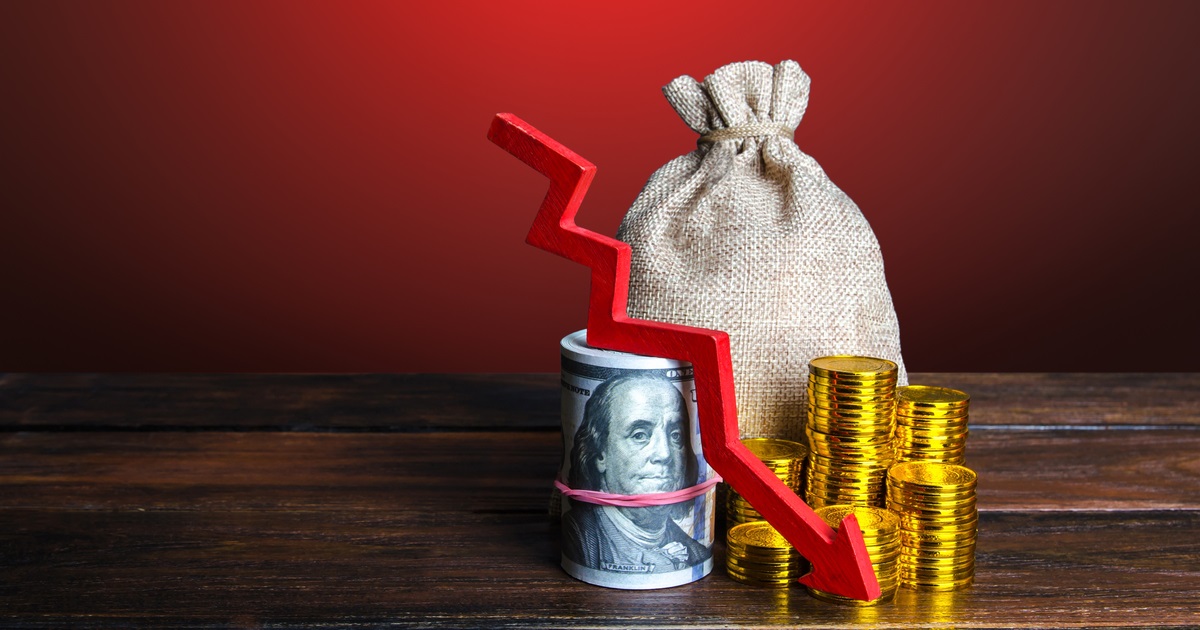
Posts Global Market world economy 3849 13 January 2023
Analysts expect that in 2023 the economies of Asian countries will grow, while the USA and the Eurozone are threatened with recession
The war in Ukraine has already led to a slowdown in global economic growth in 2022, accelerated already high global inflation, including due to rising energy prices, and deepened problems in supply chains. It is obvious that the continuation of the war will have a negative impact on the world economy this year as well. It is expected that in 2023 the growth of the economies of Asian countries will be higher than that of the world, and in the USA and the Eurozone, a recession is even possible.
War and world
Analysts have calculated the cost of Russia’s invasion of Ukraine for the world economy. According to estimates by The Economist Intelligence Unit, the growth of world GDP in 2022 will decrease by 1.1 percentage points compared to 2021 – to 2.8%. Taking into account the fact that the global GDP in 2022 was about $101.6 trillion, the war in Ukraine could have cost the world economy about $1 trillion last year. The Organization for Economic Cooperation and Development (OECD) predicts that as early as 2023, the war in Ukraine may cost the global GDP $2.8 trillion in lost production.
The military aggression of the Russian Federation against Ukraine became the trigger for many problems in the world economy, which has not yet had time to recover from the consequences of the COVID-19 pandemic. Additional factors in the decline in economic activity were ongoing supply chain issues, tightening of monetary policy by central banks around the world, and frequent lockdowns in China. Thus, certain regions and the world as a whole faced high uncertainty regarding the development of the economy, the threat of stagflation and even recession.
Apart from Ukraine, the strongest impact of the war was felt by the European Union and, to a lesser extent, the world. In Europe, the result of the war was a significant jump in prices, especially for energy. As a result, inflation accelerated, prompting central banks to quickly raise interest rates. In turn, an increase in interest rates leads to a worsening of economic growth prospects.
Asian driver
The economic situation in the world in 2022 was mostly negative, and analysts adjusted their estimates downwards throughout the end of last year in accordance with economic realities. So, most likely, in 2023, the world economy will experience a slowdown in growth, which is partly related to the rapid increase in interest rates by the world’s central banks.
Forecasts of the world economy growth in 2023
| Organization | Preliminary forecast | New forecast |
|---|---|---|
| The World Bank | 3% | 1.7% |
| WTO | 3.3% | 2.3% |
| Fitch | 1.7% | 1.4% |
| OECD | 2.2% | 2.2% |
| IMF | 2.9% | 2.7% |
| ING | n/a | 1.9% |
In 2023, the world economy will grow mainly at the expense of Asia. According to OECD estimates, large Asian countries will account for approximately 75% of global GDP growth in 2023. For example, Fitch predicts China’s GDP growth of 4.1%, and Morgan Stanley even raised its forecast for the country’s economic growth in 2023 from 5% to 5.4%. The growth of the economy will be facilitated by the fact that China has canceled its policy of zero tolerance regarding the coronavirus, which previously restrained business activity in the country in all types of activities.
The Asian Development Bank (ADB) lowered its economic growth forecast for emerging Asian economies for 2023 amid a worsening global outlook from 4.9% to 4.6% previously. However, it is still higher than in developed countries. The example of India is also indicative, for which the ADB predicts an economic growth of 7.2% for the current year, while the IMF – 6.1%.
The specter of recession
The World Bank directly warns about the risks of a global recession, from which developing countries can suffer the most. Slow rates of economic growth are expected in the United States and the European Union this year. In particular, the IMF lowered its forecast for US GDP growth in 2023 to 1% (April 2022 forecast – 2.3%), in the Eurozone – to 0.5% (April forecast – 2.3%). In turn, the OECD predicts 0.5% growth in 2023 for the US and the Eurozone. The European Central Bank announced the same expectations (0.5%) for the Eurozone.
Forecast of economic growth of EU countries and the UK in 2023
| Country | Preliminary forecast | New forecast |
|---|---|---|
| Germany | 0.8% | 0.3% |
| France | 1% | 0.7% |
| Spain | 2% | 1.2% |
| Italy | 0.7% | 0.2% |
| The UK | 0.5% | 0.3% |
Data source: IMF
One of the most pessimistic forecasts for 2023 is given by the Fitch agency – 0.2% GDP growth in the US and the Eurozone, which already predicts high risks of a short-term recession for several quarters of 2023. In turn, ING analysts predict a full-fledged recession in developed countries in 2023: the US GDP will decrease by 0.4%, the UK – by 1.2%, Germany – by 1.5% and France – by 0.3%, and the eurozone as a whole – by 0.7%.
Despite the fact that Europe managed to adequately prepare for the winter of 2022-2023, the factor of high prices for energy resources will be relevant in 2023 as well. Moreover, Europe may once again face the problem of a shortage of natural gas supply. Reductions in LNG imports by China and Japan in 2022 helped Europe cover its gas needs. However, the growth of the economy and gas consumption in China in 2023 may lead to a gas shortage for Europe.
At the same time, analysts predict a slowdown in inflation. The US Federal Reserve is expected to cut interest rates by the end of 2023 as it faces a slowing economy.
World trade
In general, 2022 looks quite positive for the global economy. Thus, the World Trade Organization improved the forecast for the growth of world trade for 2022 to 3.5% (from 3% in the April forecast), but sharply reduced expectations for 2023 – to 1% (from 3.4%).
In addition, according to UNCTAD estimates, world trade will reach in 2022, a record $32 trillion, including trade in goods will amount to $25 trillion (+10%), and trade in services – almost $7 trillion (+15%). However, trade in goods increased partly due to high energy prices, not in physical terms.
In general, the outlook for world trade in 2023 looks increasingly gloomy. Negative factors will be the geopolitical situation, high energy prices, low expectations of economic growth, tightening of monetary policy by central banks of developed countries, and high inflation rates.





